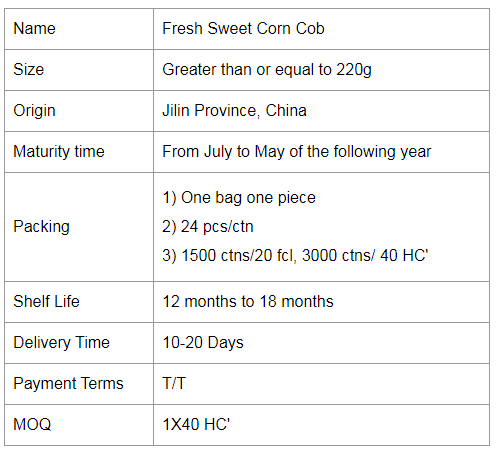In the past, rapeseed was mostly based on seedling transplanting, which had a significant advantage in increasing production. However, in recent years, due to the rapid transfer of rural youth labor, some places were changed to live broadcast in the planting mode, most of which were changed to broadcast. There are also strips, or hole broadcasts. Therefore, there have been some new situations on the issue of fertilization: first, the harvest time is late, the season is tight, and there is no time for fine fertilization; the second is that it is difficult to apply organic fertilizer; the third is that the fertilization is mainly based on the application, and the quality is rough; Many farmers ignore the formula fertilization, but only partial nitrogen fertilizer, prone to phosphorus deficiency, potassium deficiency and other elemental symptoms, and ultimately affect the yield. After the adjustment of rapeseed cultivation methods, in order to strive for a bumper harvest of rapeseed, it is necessary to take corresponding measures to apply fertilizer scientifically. First, the difference between the situation, due to fertilization. 1. To understand the demand for fertilizer in rapeseed. First, the growth period of rapeseed is long, the amount of fertilizer needed is large, and the required fertilizer is 3.0~3.5 times higher than that of gramineous crops. Second, the critical period of rapeseed is in the seedling stage, and the maximum efficiency of fertilizer is in flowering stage. The third is that rapeseed requires more nitrogen fertilizer than potassium fertilizer. The demand for potassium fertilizer is more than that of phosphate fertilizer. The ratio of nitrogen, phosphorus and potassium fertilizer is 1:0.33:0.39. The fourth is that rapeseed base fertilizer accounts for about fertilizer application. 60% of the total, topdressing accounts for about 40% of the total fertilization. The base fertilizer should be based on the rushing application. The anterior cockroach will apply 1500 kg of decomposed farm organic fertilizer, or 75 kg of bio-organic compound fertilizer, or 50 kg of high-efficiency inorganic compound fertilizer, and the holding boron 0.25~0.3. In kilograms, the rapeseed planted later with 3~4 kg of urea as seed fertilizer. 2, for the rapeseed without the application of base fertilizer, according to different soil quality, different soil forces, different seedlings, according to local conditions to apply fertilizer, to chase the base, to speed up the late. To determine the demand for fertilizer in different growth stages of rapeseed, according to research, nitrogen requirement in seedling stage accounted for 43.9% of total growth period, demand for phosphorus accounted for 20.0%, and demand for potassium accounted for 24.2%. From the bolting to the initial flowering stage, nitrogen needs 45.8% of the total growth period, phosphorus needs 21.7%, and potassium needs 54.1%. From the flowering stage to the maturity stage, nitrogen is required to be 10.3%, phosphorus is required to be 58.3%, and potassium is required to be 21.7%. According to this law, the fertilizer can meet the demand and reduce waste. Second, chasing after the early, timely in place. The demand for phosphorus in rapeseed is not as good as the amount of nitrogen and potassium, but it is very sensitive to phosphorus. For example, the critical period of rapeseed for phosphorus needs to be in the seedling stage. At this time, phosphorus deficiency has a great influence on the nutrition, growth and yield of rape in the middle and late stages of rape. Even if the phosphorus supplement in the middle and late stages can not compensate for the loss of phosphorus during seedling stage. Since phosphorus can be repeatedly used in rapeseed, the earlier it is applied, the earlier the absorption and the greater the efficiency. Phosphorus application can promote the early maturity of rapeseed for 2~3 days, and increase the oil content by 0.5~2.4%. Therefore, rapeseed must be applied with sufficient phosphate fertilizer before the 5 leaves of the seedlings. The moss flowering period is the maximum efficiency period of rapeseed nutrition, and the fertilizer content accounts for the largest proportion in the whole life. Therefore, it is necessary to apply fertilizer in time for bolting to flowering, so that it can be used for buds. Third, smooth fertilization, do a good job. In order to focus on the rapeseed autumn and winter, before the 5 true leaf period, 5 kg of urea seedlings should be chased per acre, and 20~25 kg of phosphate fertilizer should be applied. In order to improve the fertilizer efficiency, nitrogen and phosphorus should be mixed, deep trenching or hole application, and random application will cause fertilizer loss. When rapeseed flower buds are differentiated, it is necessary to chase the plate fertilizer. At this time, it is mainly based on the quick-acting nitrogen fertilizer. Each acre should be chased by the rotted man with 500~750 kg of manure, or 5-7 kg of urea. During the moss flowering period, 8~10 kg of urea per acre is applied with 3~5 kg of diammonium phosphate or 15~20 kg of ternary compound fertilizer. In order to prevent premature aging, it is necessary to apply 3~5 kg of urea in the later stage, and spray boron fertilizer 1~2 times. At the same time, it can also be mixed with Huimanfeng active liquid fertilizer 500 times liquid, which can exert the comprehensive functions of cold resistance, stress resistance and promotion of early maturity. Disclaimer: Some articles on this website are transferred from the Internet. If legal rights of third parties are involved, please inform this website. phone Ready-to-eat Single Packed Sweet Corn
The factory is located in Gongzhuling City which known as "Hometown of Corns in China", it is one of the top three golden corn belts in the world far away from pollution.
If you have any questions, please contact us directly. Welcome to visit our factory, if you have any questions, please email us directly.
Sweet Corn Cob Varieties,Sweetest Sweet Corn,Sweet Corn Maize,Sweetened Corn Cob Jilin Province Argricultural Sister-in-law Food Co., Ltd. , https://www.nongsaocorn.com
Jilin Province, as the main corn producing region in China, is also in the main grain exporting province of the country. It has been the first in China in terms of total corn production and commercial grain rate. There has the mosst excellent soil and climate which are suitaable for corn growth. The corns there have high yield and excellent quality, are ideal raw materials for processing fresh sweet and waxy corn.Corn planting in the Northeast region is mostly one crop a year, and spring sowing is mainly based on clearing, which accounts for more than 50% of the corn planting area in the Northeast.
In addition to clearing, the importance of corn in crop rotation cannot be ignored. Rotate crops with sorghum, millet, soybeans and other crops to improve crop yields.
Affected by climatic characteristics, the choice of corn varieties in Northeast China is to choose varieties with moderate maturity or early maturity, and at the same time have the characteristics of low temperature tolerance and high yield.


